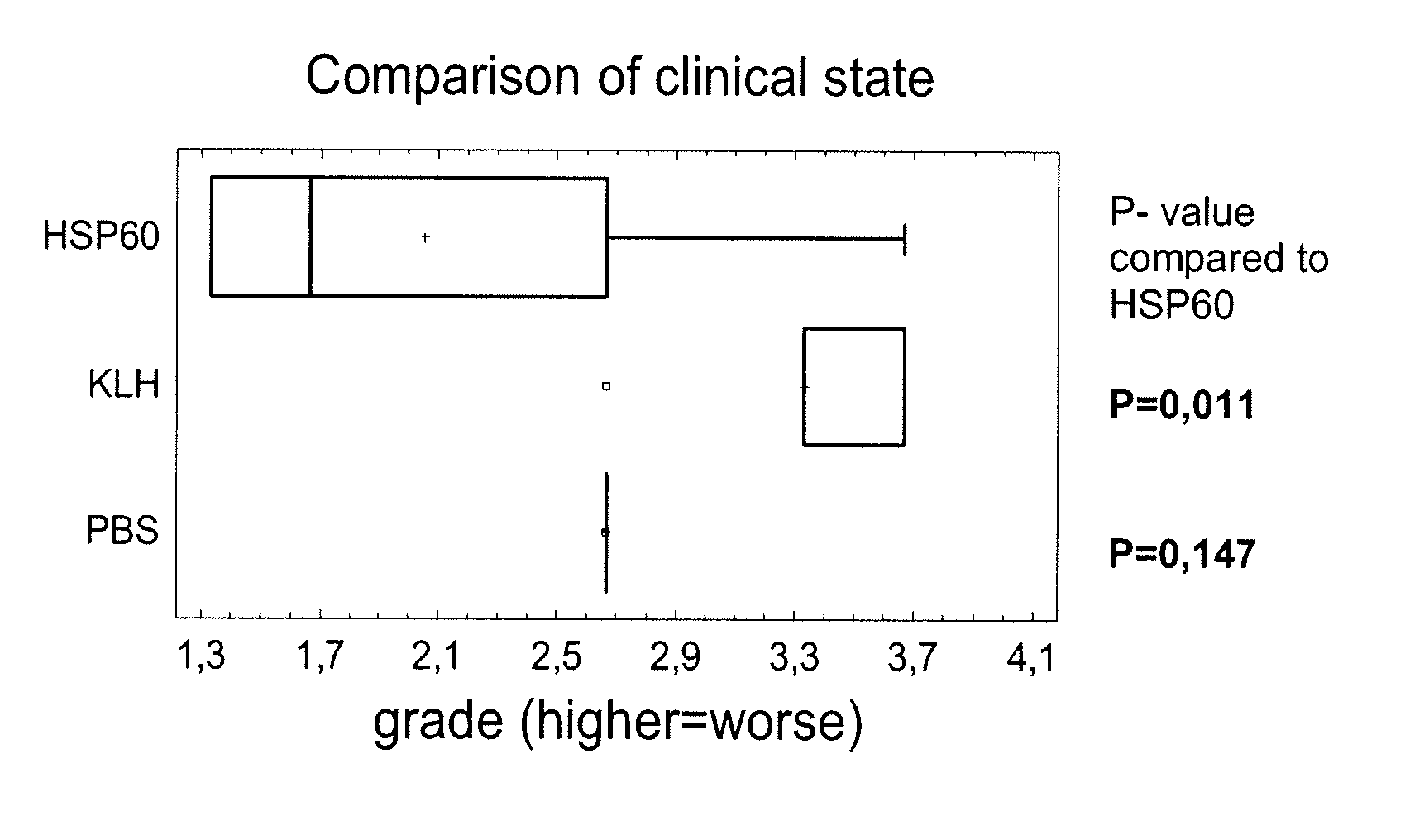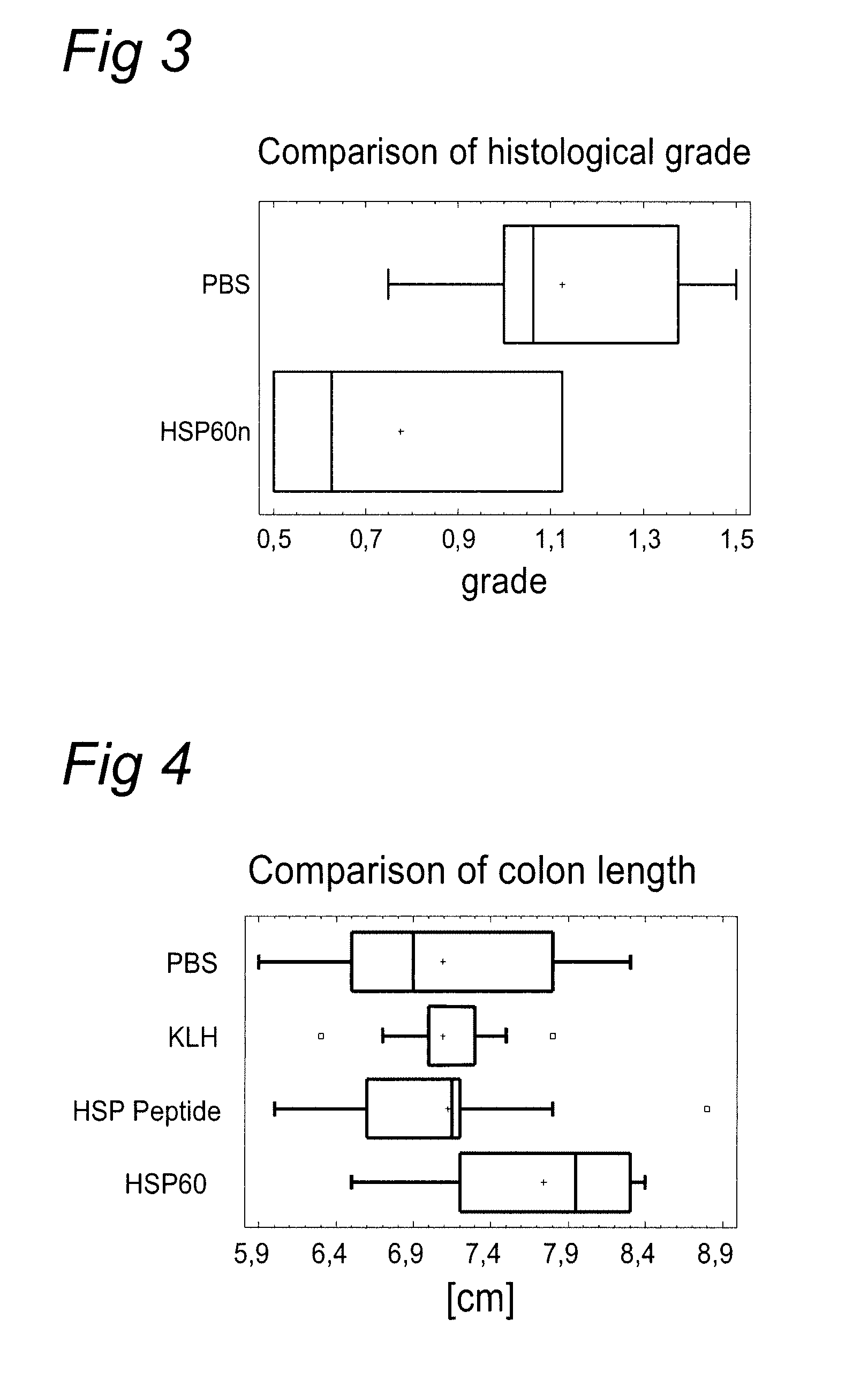Treatment and prevention of inflammatory bowel diseases
a technology for inflammatory bowel disease and treatment, applied in the digestive system, peptide/protein ingredients, pharmaceutical non-active ingredients, etc., can solve the problems of insufficient data to imply sensitization, and no experimental ibd disease can be induced, so as to maximize the number of matches and minimize the number of gaps
- Summary
- Abstract
- Description
- Claims
- Application Information
AI Technical Summary
Benefits of technology
Problems solved by technology
Method used
Image
Examples
example 1
The DSS Model of Colitis
[0115] A model of colitis that is at least partially related to a change in epithelial cell barrier function is the colitis induced by the physical agent, dextran sulfate sodium (DSS). This model has been frequently used to study the efficacy of potential therapeutic agents because of its ease to induce via administration of DSS in drinking water and because DSS induces a consistent level of colitis with a defined onset. The mechanisms of inflammation in this form of colitis are, at least initially, the activation of nonlymphoid cells such as macrophages and the release of pro-inflammatory cytokines. Changes in epithelial barrier function can be found early (several days before the onset of frank inflammation) and thus may set the stage for macrophage activation.
[0116] In the acute stages of DSS colitis the T cell response consists of a polarized Th1 response, but in later and more chronic phases of the inflammation, a mixed Th1 / Th2 response occurs. In eith...
example 2
Protective Effect of HSP60 on DSS Colitis in Mice
[0117] In this experiment, the inventors investigated the protective effect of M. tuberculosis HSP60 in dextran sulfate sodium (DSS)-induced murine colitis. HSP60 (33 microgram) (SEQ ID NO: 1) was applied orally using gavage once a week during 4 weeks and colitis was induced 9 days later by DSS in drinking water ad libitum for 7 days. Evaluation of the colitis severity was performed by clinical state, colon length and severity of histomorphological changes in the colon mucosa.
[0118] The experimental schedule involved: [0119] Day 0: first dose of HSP60 composition [0120] Day 7: second dose of HSP60 composition [0121] Day 14: third dose of HSP60 composition [0122] Day 21: fourth dose of HSP60 composition [0123] Day 28-Day 35: DSS
[0124] Group 1 (Placebo): [0125] mice: 10×BALB / c female [0126] age: 15-21 weeks [0127] treatment: PBS 100 microlitre intragastrically 4 times (experimental day 0, 7, 14 and 21) [0128] DSS: Experimental day 28...
example 3
Protective Effect of HSP60 and HSP60 Peptide on DSS Colitis in BALb / c Mice
[0143] In this experiment a defined HSP60 derived peptide (SEQ ID NO: 2) was tested besides the M. tuberculosis HSP60 protein (SEQ ID NO: 1). For control purposes a KLH protein was added. The proteins and peptide (30 microgram) were applied orally using gavage once a week during 4 weeks and colitis was induced 7 days later by DSS in drinking water ad libitum for 7 days. Evaluation of the colitis severity was performed by clinical state, colon length and severity of histomorphological changes in the colon mucosa.
[0144] Group 1 (PBS): [0145] mice: 10×BALB / c female [0146] age: 105 days and 135 days [0147] treated: 100 microlitre of sterile PBS intragastrically 4 times [0148] DSS: 8 days ad libitum
[0149] Group 2 (KLH, Sigma H-2133): [0150] mice: 10×BALB / c female [0151] age: 105 days and 135 days [0152] treated: KLH 30 μg / mouse in 100 μl of sterile PBS intragastrically 4 times [0153] DSS: 8 days ad libitum
[0154...
PUM
| Property | Measurement | Unit |
|---|---|---|
| Fraction | aaaaa | aaaaa |
| Fraction | aaaaa | aaaaa |
| Mass | aaaaa | aaaaa |
Abstract
Description
Claims
Application Information
 Login to View More
Login to View More - R&D
- Intellectual Property
- Life Sciences
- Materials
- Tech Scout
- Unparalleled Data Quality
- Higher Quality Content
- 60% Fewer Hallucinations
Browse by: Latest US Patents, China's latest patents, Technical Efficacy Thesaurus, Application Domain, Technology Topic, Popular Technical Reports.
© 2025 PatSnap. All rights reserved.Legal|Privacy policy|Modern Slavery Act Transparency Statement|Sitemap|About US| Contact US: help@patsnap.com



